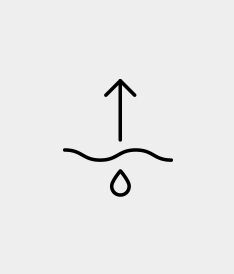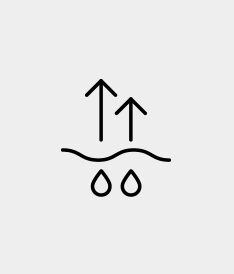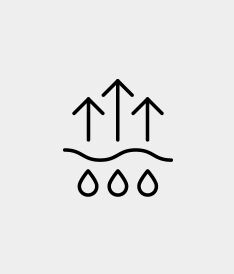
Watertightness and breathability
Waterproof material
The waterproofness of a material is indicated by its water column pressure, which describes how much water pressure the material can withstand before it begins to let water through. Waterproof materials are designed to keep rain and snow out, keeping the body dry. Water column pressure (measured in mm) indicates how much pressure the material can endure before water penetrates. Waterproof fabric is created by either laminating or coating the material with a waterproof membrane.
Watertightness
Breathability
The special thing about breathable materials and what makes them comfortable to wear is that sweat can penetrate and thus escape the body. It can do this due to a special membrane used in these materials. In the membrane there are a lot of holes, which are of a size that allows sweat to pass through, but water droplets cannot.
There are different degrees of breathability, depending on how quickly sweat passes through the material. The way to measure breathability is to look at how many grams of sweat there are per m2 of fabric over 24 hours (g/m2/24h).
Breathability

Under 5.000 g/m2/24h
Low performance, usually seen in softshell jackets, makes it comfortable for the wearer during physical activity.

5.000-10.000 g/m2/24h
Medium performance, often used for ski jackets and some softshells. Also usually used for rainwear to ensure the body can breathe while staying dry.

10.000-20.000 g/m2/24h
High performance, usually used for professional ski jackets and other garments where a high level of performance is important.
Wash
For products with special features such as waterproofing and breathability, it’s important to treat the garment correctly to ensure a long life and performance.
Washing instructions should be followed carefully and cleaning products made specifically for this type of material should be used. This ensures that the membranes on the material last longer, and thus the product retains its special properties for a longer time. If the product is not treated correctly, the membrane will be damaged and its special properties will quickly disappear.
Taped seams
To ensure that a product remains completely waterproof, all seams should be covered with a special tape. This tape enhances the product's properties and is used on rainwear and some skiwear.











































